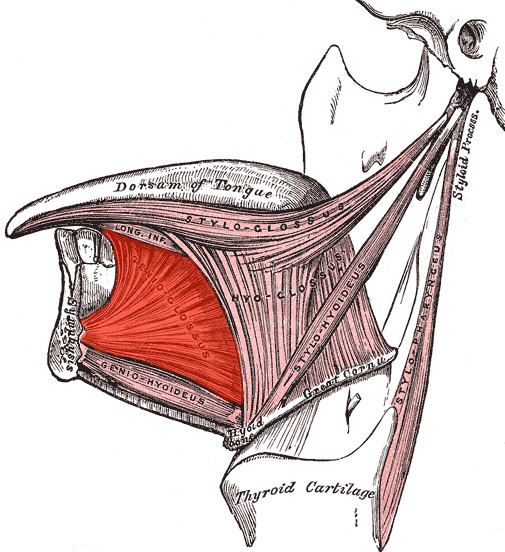Latin musculus genioglossus | ||
 | ||
Nerve Hypoglossal nerve (CN XII) Actions Complex - Inferior fibers protrude the tongue, middle fibers depress the tongue, and its superior fibers draw the tip back and down | ||
The genioglossus is one of the paired extrinsic muscles of the tongue. The genioglossus is the major muscle responsible for protruding (or sticking out) the tongue.
Contents
Structure
Genioglossus is the fan-shaped extrinsic tongue muscle that forms the majority of the body of the tongue. Its arises from the mental spine of the mandible and its insertions are the hyoid bone and the bottom of the tongue.
Innervated by the hypoglossal nerve, the genioglossus depresses and protrudes the tongue.
Variation
The canine genioglossus muscle has been divided into horizontal and oblique compartments.
Clinical relevance
Contraction of the genioglossus stabilizes and enlarges the portion of the upper airway that is most vulnerable to collapse. Relaxation of the genioglossus and geniohyoideus muscles, especially during REM sleep, is implicated in obstructive sleep apnea.
Peripheral damage to the hypoglossal nerve can result in deviation of the tongue to the damaged side. The genioglossus is often used as a proxy to test the function of the hypoglossal nerve, by asking a patient to stick out their tongue.
Etymology
The name derives from Greek roots: "Geneion" for chin, and "glossa" for tongue.
